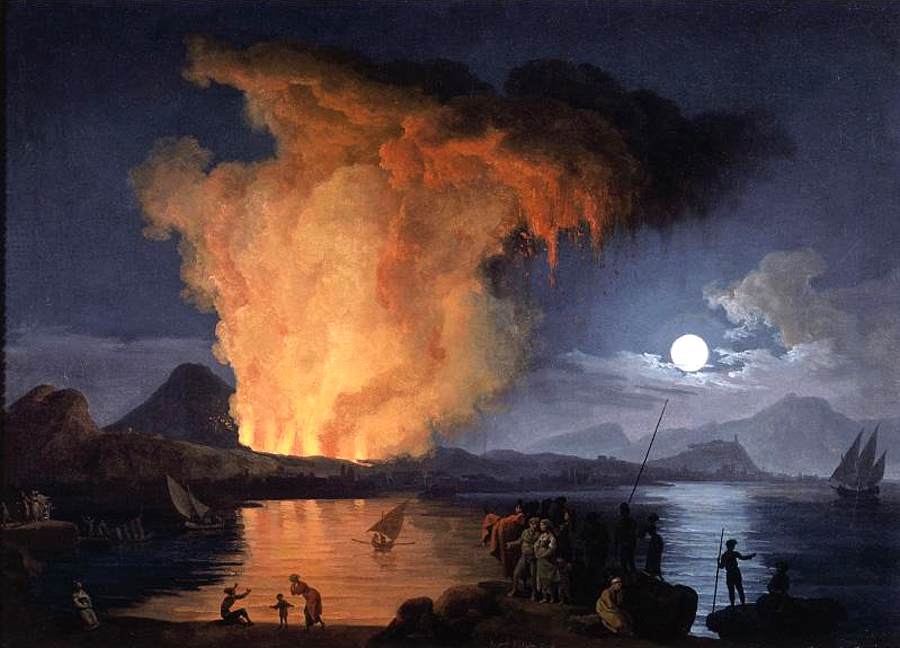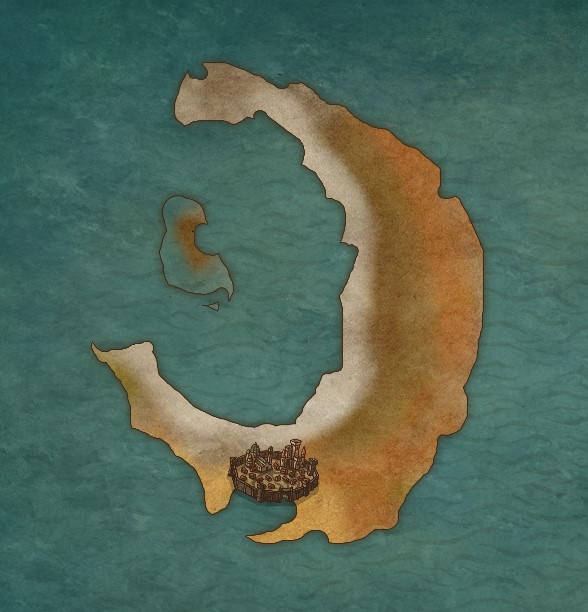Mpe-ar
Mpe-ar (Ngad i zerib: 'At the Foot of the Mountain'), or Empear in its farenized form, was the capital city of Old Moon, an important early Zeribian island state. It was located in Crescent Island, before it was destroyed by the catastrophic Crescent Eruption of 420 AFS.
It was quickly announced, that the king had just passed away due to his illness, and the prince Šamžan Senet had ordered everyone to evacuate immediately. The court left hastily for the harbour, with only light belongings, leaving the most of their valuables behind.
The smoke clouds descended on the island on the way, and the court barely reached the coast safely. When the common people saw their nobles, whom they had trusted to keep them safe, fleeing, the whole lower city started to flee in a general chaos, everyone leaving to the sea in their canoes and small boats. Most fled for Mulengder, the nearest smaller island of the chain just a small distance away.
Destruction
Main article Black Years - Crescent Eruption The Great Eruption that was about to destroy Mpe-ar began in the early spring of 420 AFS. The current king, Ustetur-Sahar Šamžan, had fallen in the disgrace of his Lord Sahar. The great Plague had hit the city earlier in the winter, and dispite his offerings and prayers the anger of the volcano was not calmed.
Some weeks before the eruption, the king himself had fallen ill. This is probably the reason why the majority of the city's residents never fled the city, before the morning of the eruption. The court was woken up in the early hours of the morning by a great earth quake, and a heavy pillar of smoke rising from the mountain.
Some weeks before the eruption, the king himself had fallen ill. This is probably the reason why the majority of the city's residents never fled the city, before the morning of the eruption. The court was woken up in the early hours of the morning by a great earth quake, and a heavy pillar of smoke rising from the mountain.
The smoke clouds descended on the island on the way, and the court barely reached the coast safely. When the common people saw their nobles, whom they had trusted to keep them safe, fleeing, the whole lower city started to flee in a general chaos, everyone leaving to the sea in their canoes and small boats. Most fled for Mulengder, the nearest smaller island of the chain just a small distance away.
At the midday the main eruption struck. According to the eye-witness testimonies, it was as if a great fiery chasm had opened, and the whole mid-section of the island collapsed to the sea in one huge explosion. The refugees were saved by hiding higher in the hills away from the expected tsunami that struck the island shortly after.
In the following days rescue parties were send to the main island. According to the survived descriptions, the lower city was completely covered in a thick layer of ash, but a couple dozen people had survived by hiding in the ruins. Few people were also saved from the other villages of the island. The upper city, however, was completely destroyed. The palace had collapsed down in a chasm, as if being ripped apart by the Gods themselves, and the rest was covered by firestone and nothing living or worth the rescue was found there.
In the following days rescue parties were send to the main island. According to the survived descriptions, the lower city was completely covered in a thick layer of ash, but a couple dozen people had survived by hiding in the ruins. Few people were also saved from the other villages of the island. The upper city, however, was completely destroyed. The palace had collapsed down in a chasm, as if being ripped apart by the Gods themselves, and the rest was covered by firestone and nothing living or worth the rescue was found there.
Legacy
The court and other inhabitants fled for the other Zeribian island states, but most of them were turned away because they were thought to be cursed and plagued. Many of them, including the prince Šamžan Senet were killed by the plague, famine, and infighting during the couple years that followed. However, some accounts of the great destruction survive (as expanded upon here ) although they differ in the details.
RUINED SETTLEMENT
420 AFS





Comments